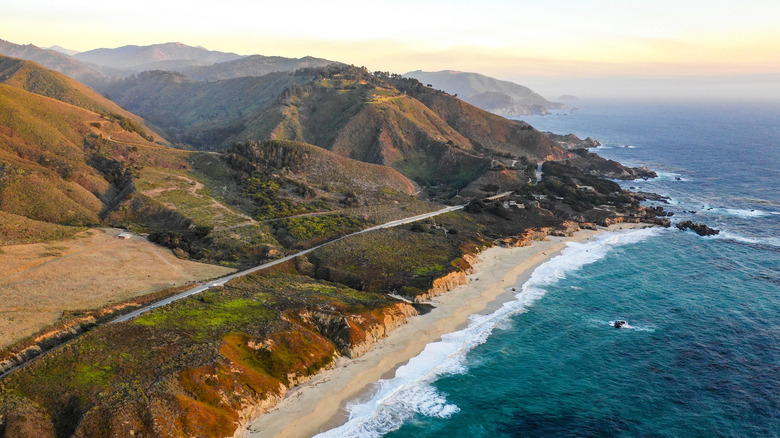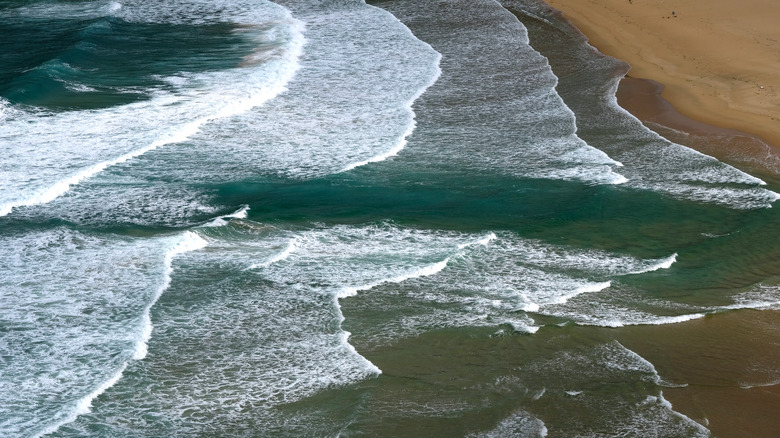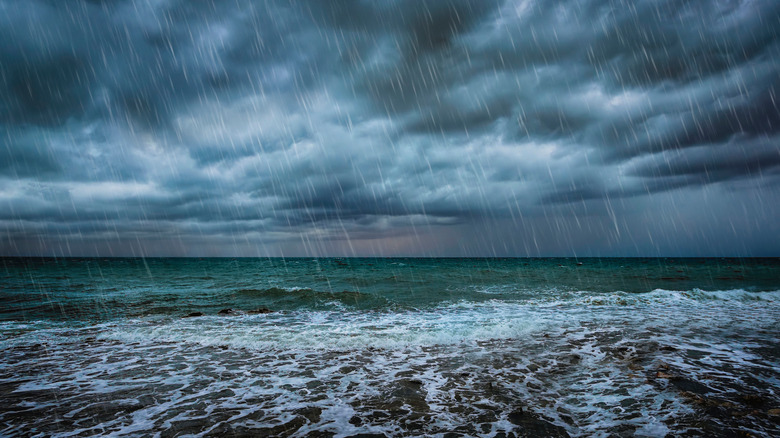The Most Dangerous Time Of Year To Swim In The Pacific Ocean
When you visit the sunny and warm beaches of the U.S. Pacific coast, the first thing you may think about doing is putting on your swimsuit and heading into the water. However, the waters of the Pacific Ocean can be pretty feisty with strong currents, large waves, and frigid temperatures. In fact, off the coast of California, ocean temperatures in the warmest months of August and September are usually around 68 degrees Fahrenheit in the south and only 52 degrees Fahrenheit in the north. This means that for much of the year, a wetsuit is required to comfortably swim in the Pacific. Unfortunately, a wetsuit can make you look more like a seal to sharks (here are the top 15 sharks ranked by danger level).
However, on the Pacific coast, it's not really the sharks you have to worry about but rather the rip currents. In fact, while California lifeguards have to save around 60,000 people per year, around 80% of those rescues are caused by rip currents taking someone out to sea, via California Sea Grant. According to the National Weather Service, rip currents are stronger and more likely to develop on the Pacific coast in spring and summer — making this the most dangerous time of year to swim in the Pacific. Interestingly enough, this is different from the most dangerous time of year to swim in the Atlantic which is during hurricane season (June to November).
Why are Pacific rip currents more common in spring and summer?
According to the National Weather Service, there are more rip currents off the Pacific coast in spring and summer because that's typically when the swells (waves created by faraway tropical storms) change direction from northerly to southerly. This creates the opportunity for holes and channels on the ocean floor — the perfect condition for rips. Another problem with swimming in the Pacific this time of year is that the southerly swells, while not as violent as the northerlies, are more unpredictable and can send large waves hurtling your way right when you think everything is calm.
However, despite rip currents being more likely on the Pacific coast (and especially in Southern California) in spring and summer, rip currents and dangerous ocean conditions can happen any time year-round. Per OC Lifeguards, the northerly swells that hit the Pacific coast in the winter months can cause violent waves and stronger currents that can change the shape of the ocean floor and quickly turn things dangerous. It's because of this that only strong swimmers are recommended to be in the water off the coast of California in winter.
Other times the Pacific Ocean is dangerous
In the Pacific, big waves and rip currents aren't the only dangers you need to look out for. In fact, many beaches on the Pacific coast experience no swim advisories due to chemical runoff and bacterial pollution after rainfall. These advisories are normally posted online and on signs placed at affected beaches. The reason behind this phenomenon is that heavy rain can cause storm runoff which picks up chemical fertilizers, bacteria, and even raw sewage as it runs across the land and into the ocean. Because of this, most government organizations recommend waiting at least three days after a storm (or until the pathogens dissipate) before swimming. Otherwise, you may inadvertently expose yourself to bacterial infections, rashes, and even ear and respiratory infections.
However, when swimming in general, it is important to remember that the Pacific is a large ocean with big waves and deep cold waters. These conditions make for great surfing but dangerous swimming — even for experienced swimmers and surfers. In fact, on the list of the most dangerous surf beaches in the world, California beaches took three spots with Mavericks, The Wedge, and Cortes Bank.


